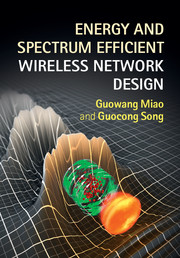Book contents
1 - Introduction
Published online by Cambridge University Press: 05 December 2014
Summary
The explosive growth and widespread applications of high-rate multimedia wireless communications have prompted waves of research and standard development activities. The ultimate goal is to connect all users to their targets all the time: to the Internet, to the cloud, and to the various devices in their lives, from phones to PC to tablet and to their cars. They expect to access a rich set of services regardless of where they are: whether at home, around the office, or outdoors. This exponential growth in data traffic is inevitably limited by spectrum availability and energy consumption of mobile terminals and access networks. The future success of wireless networks thus relies on the ability to overcome the mismatch between the requested quality-of-service (QoS) and limited network resources.
Motivation
Among available resources, spectrum and energy are two fundamental ones that enable wireless communications. Spectrum is a natural resource that cannot be replenished and therefore must be used efficiently; so that is where the special significance of spectral efficiency lies. Tremendous efforts and progress have been made in past decades to improve spectrum efficiency of wireless networks. However, the increasing market for all things wireless generates more demand than supply can handle. Wireless networks therefore need to be designed in a much more spectrum-efficient way to keep up with consumer demands.
Indeed, energy efficiency is also becoming increasingly important.
- Type
- Chapter
- Information
- Publisher: Cambridge University PressPrint publication year: 2014

